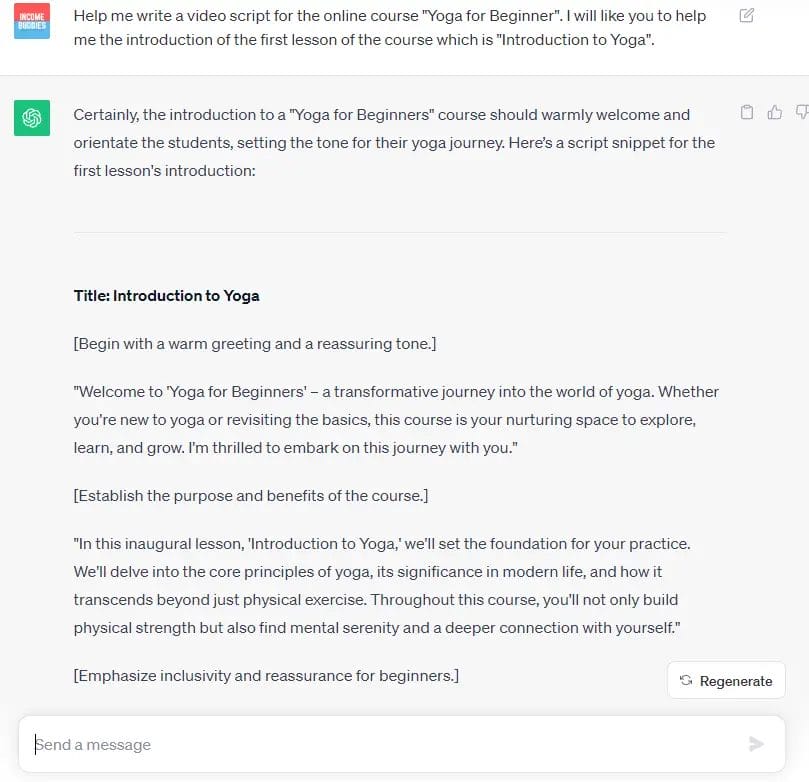How to Create an Online Course Video (Step-by-Step Guide)
Wondering how to create video for your online courses? Creating an online course can be a lot of hard work, from choosing the course topic, to creating the course materials, you’ll probably spend 25 to 500 hours before you can finally launch your online course.
As a course creator, you’ll need to have videos in your online course, as it is the key to creating a successful online course that sells. However, video online course creation isn’t as easy as it seems, thus here’s a step-by-step guide to help you create your first online course video for your course business.
KEY TAKEAWAYS
- Hosting your online video course with the right online course platform can help you engage your learners better.
- Video course utilize the concept of visual and audio to engage and stimulate your learners, choosing the right format for your video course is critical to success.
- Keep each of your video course short to less than 10 minutes, as shorter video content helps to engage your learners more.
Types of Videos for Creating Online Courses
Before we get started in building your course video, let’s understand what are the different types of course video currently available that works in creating a profitable online course business.
When you are creating a video course, here are some of the common types and their ideal contexts:
| Type of Video | Description |
|---|---|
| Talking Head Videos | Typically features a presenter addressing the camera, often used for direct teaching or connecting with learners. |
| Screencasts | Displays screen actions accompanied by voice narration, ideal for demonstrating software or specific digital tasks. |
| Animated Videos | Engages learners through storytelling, utilizing various animation styles to explain complex concepts or processes. |
| Interactive Videos | Encourages viewer interaction by allowing them to make choices or engage with the video content, enhancing engagement. |
| Whiteboard Animations | Utilizes a whiteboard or similar illustration platform to visually explain concepts or steps, often with narration. |
| Documentary Style | Emulates a documentary format to explore topics in-depth, combining interviews, visuals, and narrative storytelling. |
| Testimonial Videos | Features students or experts sharing their experiences or feedback about the course, adding credibility and trust. |
| Case Study Videos | Presents real-world examples or scenarios, allowing learners to apply knowledge to practical situations. |
| Vlogs | Personal and informal videos often used by instructors to share insights, experiences, or additional course content. |
How to Start Creating an Online Video Course
As an educator, expert in your field, or someone with valuable knowledge to share, creating online courses can be a rewarding experience.
We will walk you through the complete process of how to create an online video course, from course planning, course creation to launching your course idea to your audience.
1. Planning Your Online Course
To create an engaging online video course, you must start with a clear plan.
Begin with a thorough learning analysis to understand your audience and the goals of your course.
- Who are your audience?
- What do your learners need to know?
- How can you best deliver that knowledge?
- Which format can help convey the message to your audience?
- What is the course objective?
By defining your objectives and audience, you set the foundation for a successful course.
This is the time when you are trying to understand your audience, their wants and their needs.
The best way to get started is to create a persona of your audience with a clear objective of your course.
2. Preparing Your Course Content
Now it’s time to gather and organize your course content. Begin by creating a detailed course outline that outlines the structure of your course.
- Break down the material into logical sections or modules.
- Break down information into bite-size learning lessons.
This not only helps your students navigate your course but also makes it easier for you to create engaging content.
Course contents includes:
- Slides and video content
- Image, visuals and infographics
- Audio, music and voice recordings
- Downloadable and reading materials
- Checklist and take away notes
- Props and any other form of material that aid in learning experience
Having the right course materials not only make your course more engaging but also help clarify complex concepts.
Visual aids are invaluable in ensuring your learners grasp the material effectively.
3. Write Your Video Script
Video script is the heart and soul of your online course, a good video script can bring live into your video course, and a bad one can make your video course the most boring video ever, giving you the same effect as the beautiful lullaby you hear during your school lecture.
Writing a video script is more of an art than science, while you want to communicate the information to your learners, the video script follows a certain structure.
Video script often follows the following structure:
- Craft a compelling introduction that hook your audience.
- Create informative body content where you illustrate the bulk of the information.
- End with a memorable conclusion that refresh on what your learners have learn in the lesson.
Ensure the script flows well and is easy to understand.
You can leverage AI tools to help with scriptwriting, making the process more efficient.
Here is an example of a video script written by AI tools such as ChatGPT.

4. Setting Up Your Recording Space
Creating a welcoming and distraction-free recording environment is crucial.
A clean and well-lit space will not only improve the quality of your videos but also maintain your audience’s attention.
- Avoid having highly distracting display at the background
- Ensure good lighting in the room especially if you are recording yourself
- Soundproof the room to ensure minimal disturbance during recording
Whether you’re delivering a talking-head video or a screencast, a tidy setup can make a significant difference in the final product.
5. Recording and Editing Your Video
Now comes the exciting part – recording your video!
If you’re using a script, it will guide you through the process.
Before Hitting The Record Button
Read the script at least one time out loud before you hit the recording button.
When I first started recording my own video, I didn’t read the script out loud, thinking that it will be ok since I write my own script and I know what I will be talking about.
And you guess it… I was wrong.
Not reading my script out loud before I hit the record button lead me to spend more time editing my video because I find myself unable to pronounce some words, or finding the sentence sounding weird when spoken.
Always read a loud your script before hitting the record button, not only it can save you time editing your video but let you feel more confident when doing your recording.
Hitting The Record Button
When you are ready, start recording your video with confidence. Understand that you are the expert on the topic and many other will like to learn from you.
When I first started, I too lack confidence, and you can probably hear it from the voice of my video. Subsequently, you’ll get better after a few videos, you will get used to it and sound like a pro.
Pause as needed, especially if you make a mistake, and take a deep breath and record again.
You can always edit out errors during post-production.
Editing Your Video
Editing your video is a vital step to creating high-quality course video content.
Always get started with a good video editing software that can help you fine-tune your content. While the learning curve for a good video software is pretty steep, it is always more worthwhile to get started right than to change later.
When you are editing your video you can focus on the following:
- Remove background noise.
- Trim unnecessary parts and remove mistakes.
- Add transitions to ensure your video flows smoothly.
- Add captions and subtitles to ease of use for learners.
- Break the video into lengths between 2 to 10 minutes for maximum engagement.
6. Uploading Your Video to Your Online Course
Once your video is polished, it’s time to upload it to your online course platform.
Choose the right Learning Management System (LMS) that suits your course needs. There are many available for you to choose from, but not all of the platforms are the same.
- Some offers drip content for personalization
- Some offers quizzes, assessments and exams
- Some offers interactive video creation
- Some offers integration with video hosting providers
- Some offers hosting on your own online course platforms
An effective LMS allows you to manage your course, track student progress, and provide a seamless learning experience.
7. Delivering Your Online Video Course
With your course content ready and your videos uploaded, you’re all set to deliver your online video course to eager learners. Consider using a dedicated LMS, as it offers various benefits for both you and your students.
- Track student progress
- Manage discussions
- Personalize the learning experience
- Provide live and timely support
- Own 100% of your video course contents
If you are unsure which are the best online learning platform that let you host your video courses, check out this article:
Benefits of Video in Creating an Online Course Creation
Video content for online education offers increase in engagement, retention, and an immersive learning experience. Here’s why videos are the quintessential cornerstone of modern online learning:
- Improve Learning Experience: Videos are the storytellers that captivate learners’ attention, offering a multifaceted approach to education.
- Boost Learner Retention: The power of visuals in transmitting information ensures higher retention rates, making complex subjects more digestible and memorable.
- Forge Trust and Rapport: Videos, especially those featuring familiar faces, bridge the gap between instructor and learner, establishing a sense of connection and trust.
- Simplify Complex Concepts: The concise yet comprehensive nature of videos is a silver bullet for simplifying and elucidating intricate topics, making learning more accessible.
- Reduce Training Costs: Videos are a cost-effective replacement for traditional training, saving resources without compromising the quality of education.
Join 900+ BUDDIES who are growing their wealth with our weekly Income Newsletter
Antony C. is a dividend investor with over 15+ years of investing experience. He’s also the book author of “Start Small, Dream Big“, certified PMP® holder and founder of IncomeBuddies.com (IB). At IB, he share his personal journey and expertise on growing passive income through dividend investing and building online business. Antony has been featured in global news outlet including Yahoo Finance, Nasdaq and Non Fiction Author Association (NFAA).

